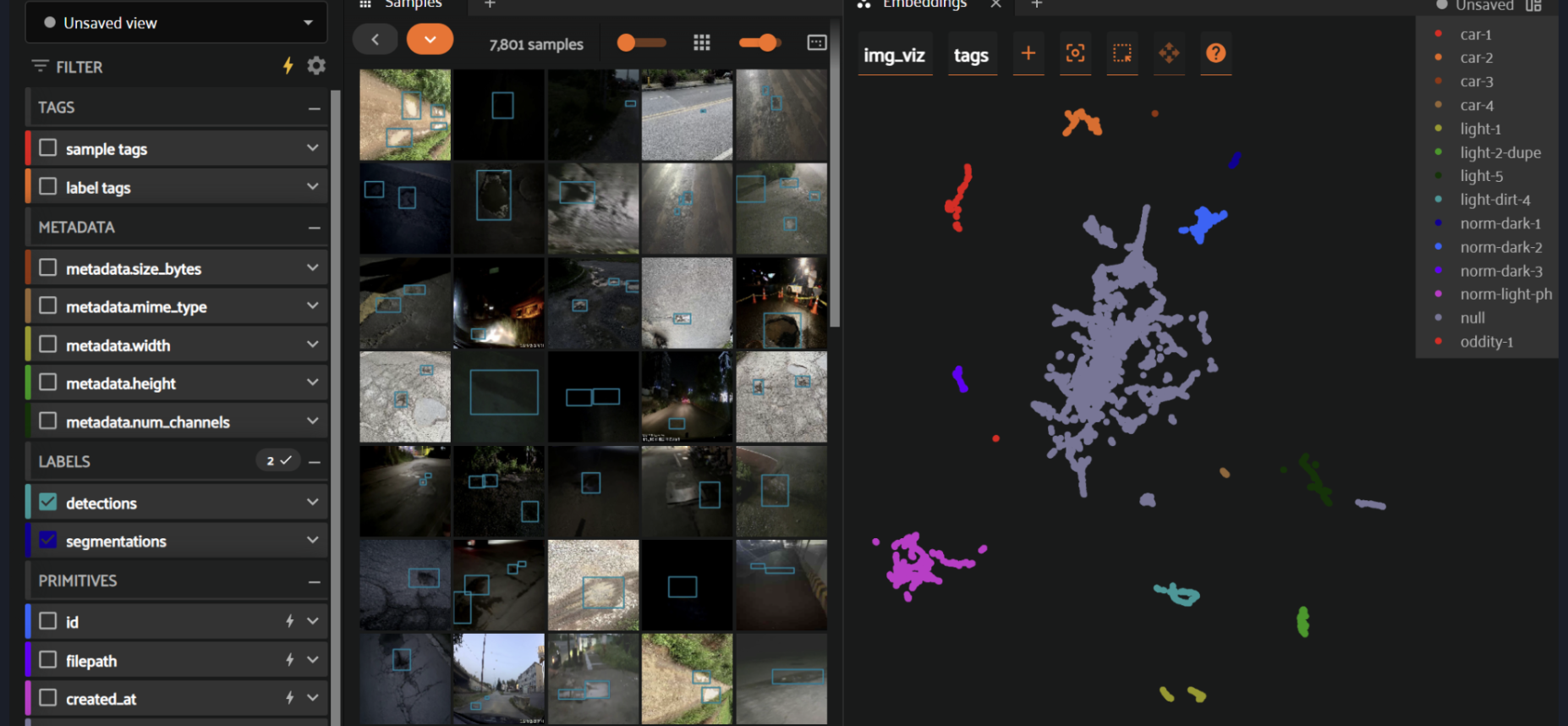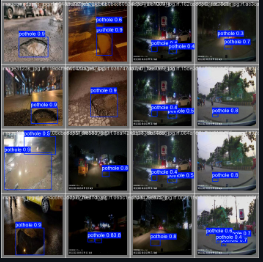#Abstract
Each year, almost one-third of all car accident fatalities are due to poor road conditions, and potholes are among the most common of those conditions. Potholes are ubiquitously found across streets, roads, and interstate highways, causing problems. There are usually no warning signs or markings to indicate a pothole, which makes them the menace of the roadways, making them very dangerous to distracted drivers and drivers following them.
The American Automobile Association (AAA) estimates that potholes cost U.S. drivers $3 billion annually in vehicle repairs. A survey by Cycling UK revealed that 31% of its members had been involved in accidents or near misses due to poor road surfaces, including potholes. Pothole-related breakdowns jumped by a fifth (17%) in the final three months of 2024 compared to the previous quarter, a sign of the ongoing poor condition of Britain’s roads, according to breakdown data from the RAC. RAC patrols went to the rescue of 4,709 drivers from October to December for damaged shock absorbers, broken suspension springs, or distorted wheels – the call-outs most likely to be caused by wear and tear from defective road surfaces.
In the realm of autonomous vehicle navigation, ensuring safety during nighttime driving remains a significant challenge, particularly concerning the detection of road anomalies such as potholes. This paper introduces "Glow Patch," a system designed to enhance nighttime pothole detection by fine-tuning the YOLOv11 object detection model in the Nighttime Pothole Dataset (NPD). Over 50 training epochs, our model achieved a mean average precision at 0.5 intersection over union (mAP@0.5) score of 0.93245, marking a 1.6% improvement over previous benchmarks. The system leverages the FiftyOne tool for dataset curation and employs Ultralytics' framework for model training. Deployment is facilitated through Docker containers on AWS, with FastAPI and Flask serving as the middleware and frontend, respectively.
Introduction
IWhat are the most accurate and efficient methods for pothole detection, and how do emerging technologies like AI and computer vision compare to traditional inspection techniques? How accurate can they be, and how beneficial would this be to the automobile industry?
Traditional pothole detection methods, such as manual inspections, are time-consuming, costly, and prone to errors. These methods often lead to reactive maintenance, addressing problems only after they have escalated.
Key limitations of traditional methods include:
Subjectivity: Human observations can vary, leading to inconsistent results.
Coverage challenges: Monitoring vast road networks is labor-intensive.
Delayed response: Late identification often results in more extensive damage and higher repair costs.
High costs: Repeated inspections and delayed repairs can strain budgets.
Many existing pothole detection models, including Faster R-CNN and earlier YOLO versions, struggle with nighttime visibility due to inadequate lighting and shadows. This often leads to missed detections or false positives.
To address this, we present "Glow Patch," a system that enhances pothole detection capabilities during nighttime by fine-tuning the YOLOv11 model on the specialized Nighttime Pothole Dataset (NPD).
#Method
Dataset Preparation
Include dataset statistics, assumptions, and provide the original NPD dataset source.
Additionally, dataset bias can result in overfitting to specific road textures or pothole shapes. We utilized the Nighttime Pothole Dataset (NPD), comprising 3,831 images capturing diverse nighttime road scenes. To ensure a balanced dataset, we employed the FiftyOne library to compute image embeddings, categorizing and filtering images effectively. This preprocessing step was vital in enhancing the model's ability to generalize across various nighttime conditions.

Model Selection and Training
Include how the dataset was trained (using GPU).
YOLOv11, the latest iteration in the YOLO series, offers state-of-the-art object detection capabilities with improved accuracy and efficiency. We fine-tuned a COCO-pretrained YOLOv11 model on the NPD using the Ultralytics framework. The training process spanned 50 epochs, with hyperparameters optimized for nighttime pothole detection. Key enhancements in YOLOv11, such as the C3k2 block and Spatial Pyramid Pooling - Fast (SPPF), contributed to the model's superior performance.
Deployment Architecture
Add images and code snippets.
For deployment, we containerized the trained model using Docker, ensuring consistency across different environments. The inference service was deployed on AWS Elastic Container Service (ECS), allowing for elastic scaling based on demand. FastAPI served as the API middleware, handling inference requests, while Flask managed API routing and the web application's frontend. This architecture ensures a seamless and responsive user experience.
Experiments
Maintenance Requirements
During training, we observed a consistent increase in precision scores over the 50 epochs, indicating effective learning and adaptation to the nighttime dataset. Validation on a separate subset of the NPD demonstrated the model's robustness and accuracy in detecting potholes under various nighttime conditions.
Results
DISCUSS LIMITATIONS OF THE MODEL
COMPARE RESULTS AGAINST 4-5 OTHER PAPERS
MAYBE DO SOME STATISTICAL ANALYSIS
SUCCESS AND FAILURE STORIES WITH IMPLEMENTATION OF MODEL
The fine-tuned YOLOv11 model achieved an mAP@0.5 score of 0.93245, surpassing previous benchmarks by 1.6%. Visual inspections of validation predictions confirmed the model's efficacy in accurately identifying potholes in nighttime scenarios, showcasing its potential for real-world applications.


#Conclusion
"Glow Patch" demonstrates the effectiveness of fine-tuning advanced object detection models on specialized datasets to address specific challenges in autonomous driving. By leveraging tools like FiftyOne for data curation and deploying scalable solutions on cloud platforms, we provide a robust system for nighttime pothole detection. Future work includes expanding the dataset to encompass various weather conditions and integrating the system into real-time vehicle navigation systems to enhance road safety further.
Sourcess
https://www.mdpi.com/2079-9292/13/19/3790
https://www.vialytics.com/blog/dangersofpotholes
https://info.oregon.aaa.com/pothole-damage-costs-u-s-drivers-3-billion-annually/